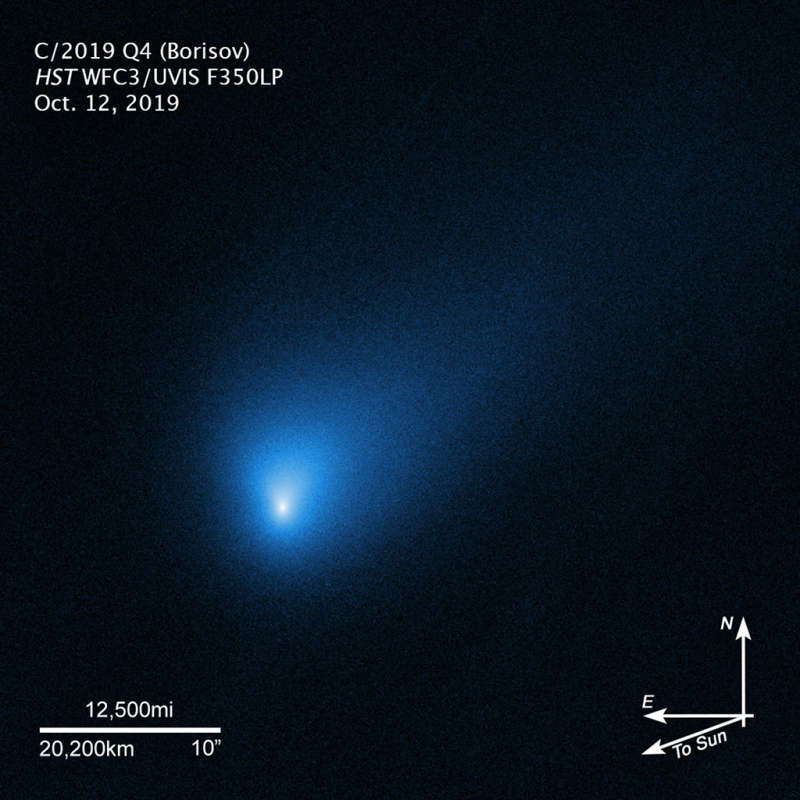
|
Explanation: After the 2017 detecton of 1I/'Oumuamua, comet 2I/Borisov has become the second recognized interstellar interloper. Like 'Oumuamua, Borisov's measured hyperbolic trajectory and speed as it falls toward the Sun confirm that its origin is from beyond our Solar System. But while detailed observations indicate 'Oumuamua is a rocky body with differences from known Solar System objects, Borisov is definitely a far wandering comet. Taken on October 12, 2019 this Hubble Space Telescope image of Borisov reveals a familiar looking comet-like activity and concentration of dust around around its nucleus. Not resolved in the image, some estimates suggest the nucleus could be between 2 and 16 kilometers in diameter. At the time of the Hubble image, comet 2I/Borisov was about 418 million kilometers away. Borisov is still inbound though and will make its closest approach to the Sun on December 7 at a distance of about 300 million kilometers (2 Astronomical units).
|
January February March April May June July August September October November December |
| ||||||||||||||||||||||||||||||||||||||||||||||||
NASA Web Site Statements, Warnings, and Disclaimers
NASA Official: Jay Norris. Specific rights apply.
A service of: LHEA at NASA / GSFC
& Michigan Tech. U.
Based on Astronomy Picture
Of the Day
Publications with keywords: comet
Publications with words: comet
See also:
- APOD: 2025 December 1 B 3I ATLAS: Tails of an Interstellar Comet
- APOD: 2025 November 25 B Comet Lemmon and the Milky Way
- 3I/ATLAS: A View from Planet Earth
- APOD: 2025 November 17 B Comet Lemmons Wandering Tail
- APOD: 2025 September 30 B Comet Lemmon Brightens
- APOD: 2025 September 29 B Two Camera Comets in One Sky
- APOD: 2025 September 26 B A SWAN an ATLAS and Mars
